Collaborations

2025.02.10
Teaming Up with Top Creatives to Innovate Craftsmanship! (Part 3)
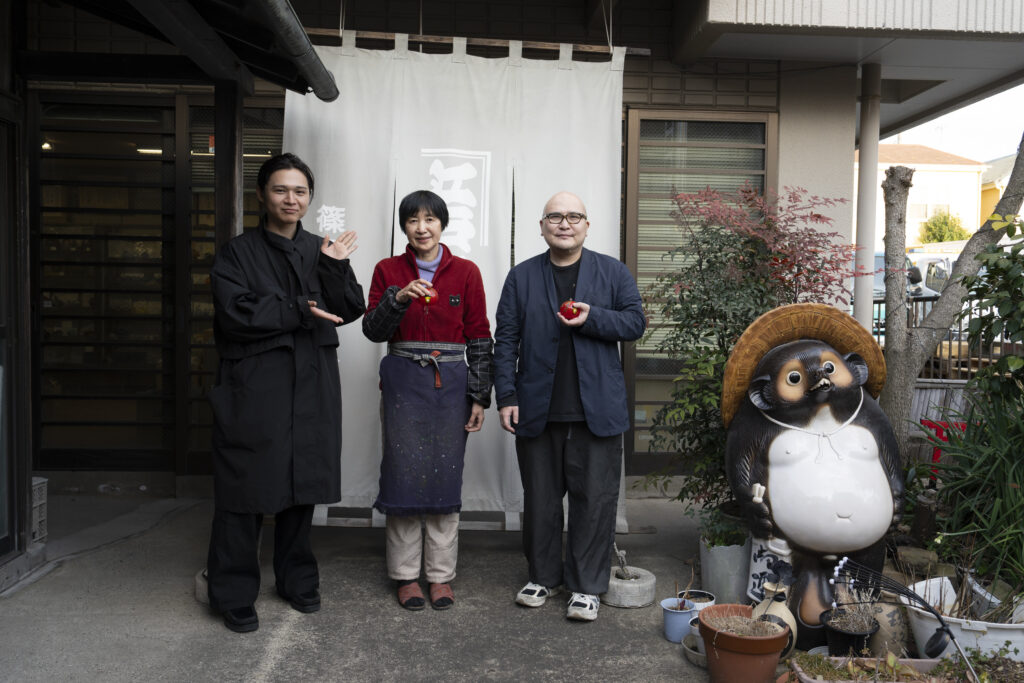
In this third installment of the collaborative project between Edogawa Collection’s partner companies and top-tier creatives, we take a look at how the original product prototypes have been refined even further. Each company has poured their skills into elevating the original Edogawa Collection product ideas to the next level—so how are things shaping up?
On a crisp, clear winter morning, Yanagi Shunsuke and Nakagawa Takumu from MUJI Ginza made their third trip to Edogawa City, off to check on the latest prototypes of the collaborative items, now close to completion, with our three Edogawa Collection partners.
The partners they’re working with are Takahashi Shibori Kogyo, specialists in metal spinning; Nawachu, makers of traditional shimenawa (sacred straw ropes); and Shinohara Furin, known for their Edo furin wind chimes. With final touches underway, both Yanagi and Nakagawa were eager to see how the products were coming together.
Their first stop was Takahashi Shibori Kogyo. True to form, President Takahashi—never short on ideas—enthusiastically showed off a new product he’d made recently. Then, amid all the congeniality, he unveiled the main attraction!
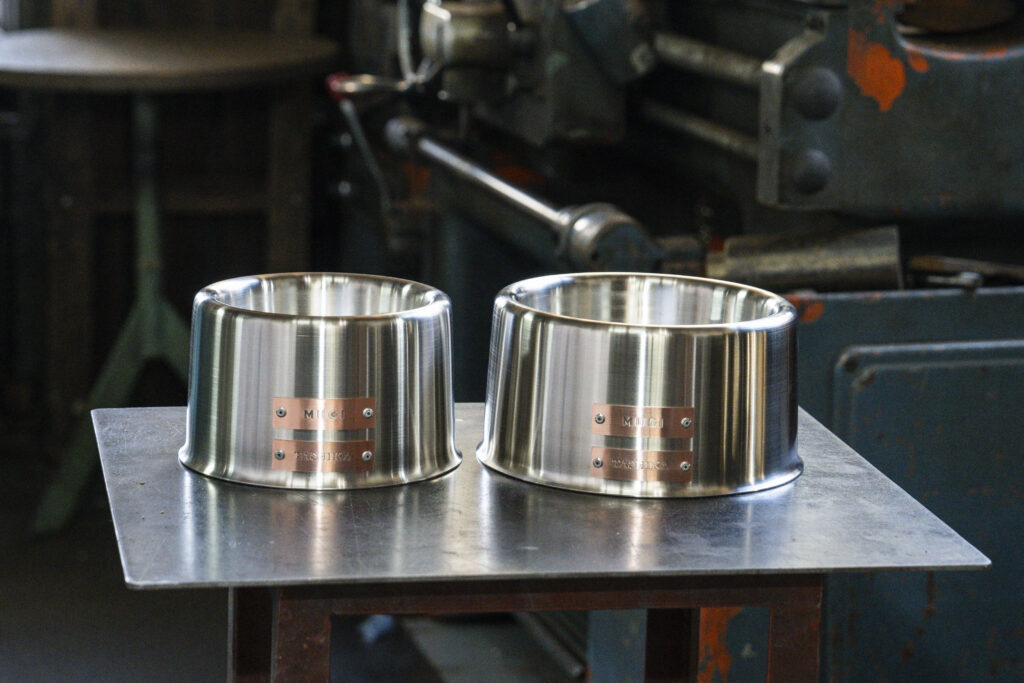
Dog bowls crafted with precision metal-spinning techniques by Takahashi Shibori Kogyo. Industrial and stylish, the bowls come with a copper nameplate for your pet.
The bowls, available in two sizes, showcase the full extent of Takahashi’s metal-spinning expertise. Their sleek form and solid weight had everyone impressed.
“Getting them this thin was a real challenge, but we made it work! I’m especially proud of the smooth curve on the edges,” said Takahashi with a smile.
Upon taking a close look at the bowls, Yanagi and Nakagawa have their enthusiastic approval: “They’re perfect!” “These are really cool!”
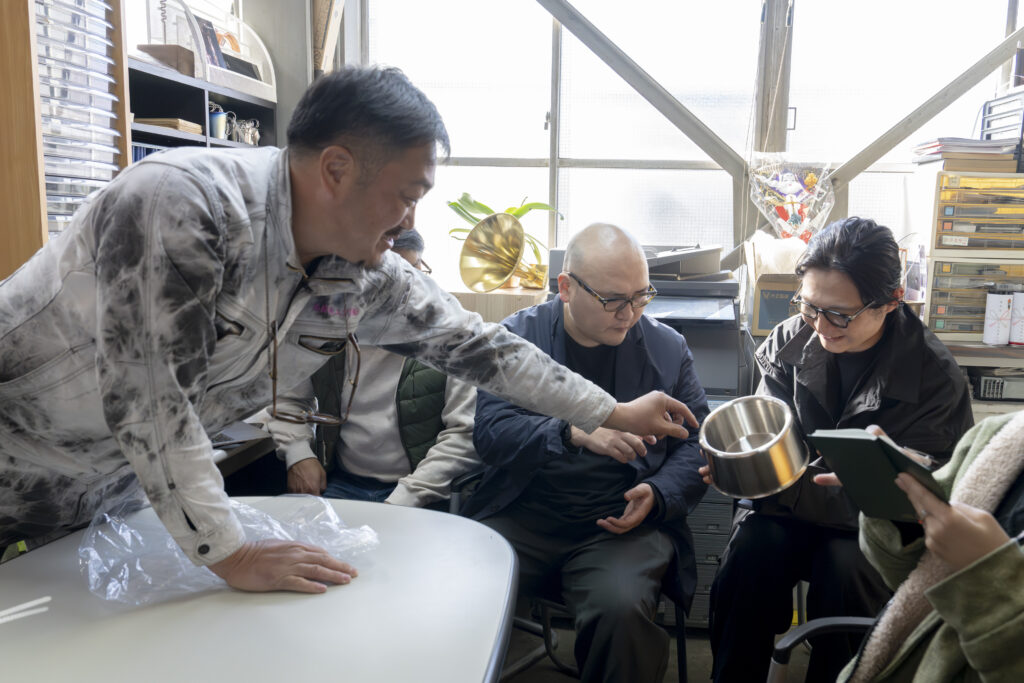
The weight in your hands says it all—“Even if your pup goes wild at mealtime, these won’t budge!” said Takahashi.
The copper nameplate on the side gradually oxidizes and patinas with use—something that, as Takahashi noted, adds character and reflects the years spent with a beloved pet.
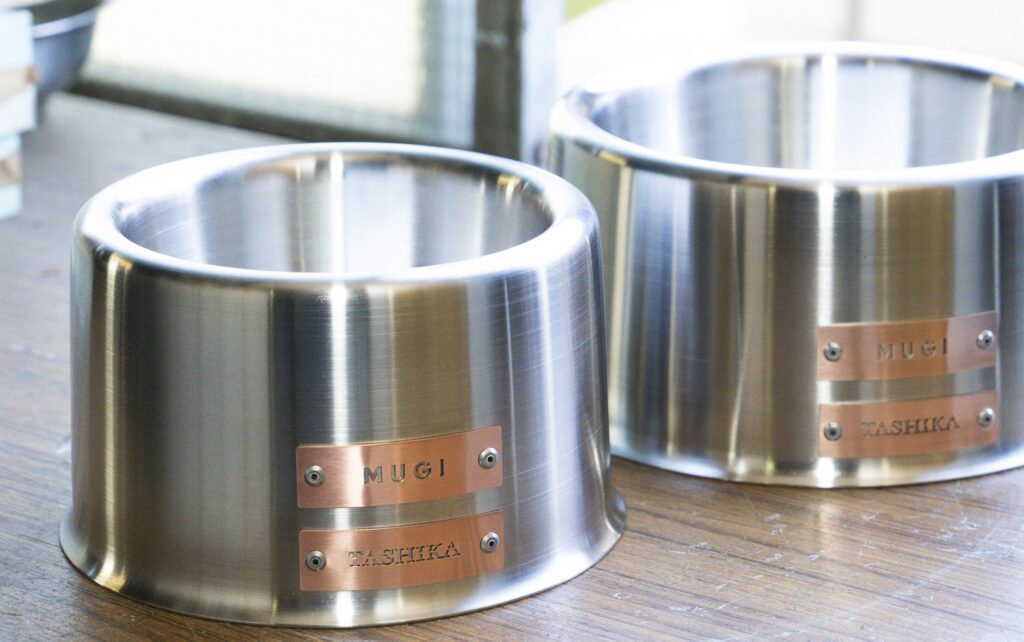
“The copper nameplate is a detail we added to help people grow attached to it over time. Some people these days call it ‘growing better with age,’” said Takahashi.
Everyone was clearly impressed with the level of craftsmanship. Still, that didn’t stop them from diving into a lively discussion about possible refinements—like tweaking the bowl’s depth to improve usability.
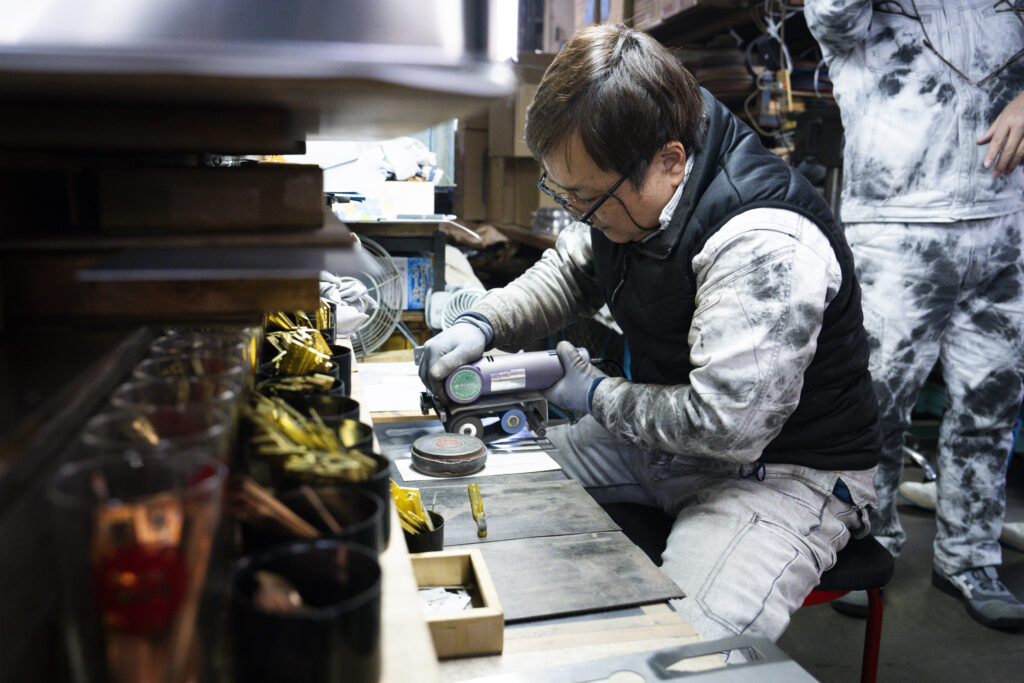
Each nameplate is hand-polished by a skilled craftsperson.
Nakagawa was delighted to see their concept finally take shape. Watching him, President Takahashi shared a moment of quiet satisfaction: “There’s nothing better in this line of work than turning a customer’s idea into something real,” he said, visibly pleased.
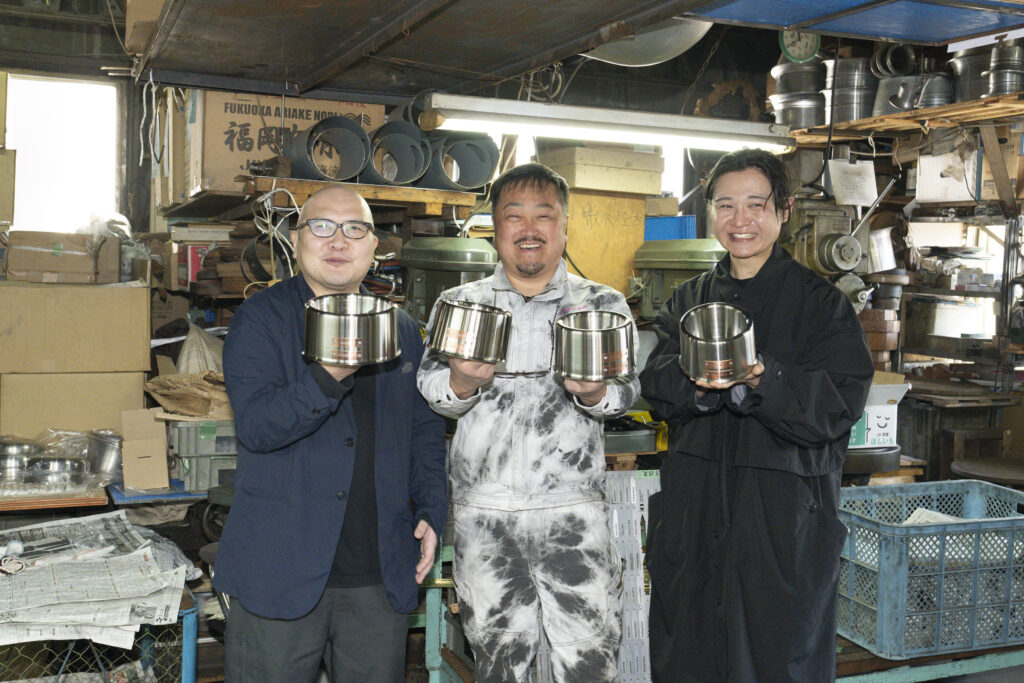
Beaming with pride: President Takahashi (center) with Yanagi (left) and Nakagawa (right), all thrilled with how the dog bowls turned out.
Next up was Nawachu. Kubishiro Mitsunobu introduced the prototype for an original shimenawa decoration kit.
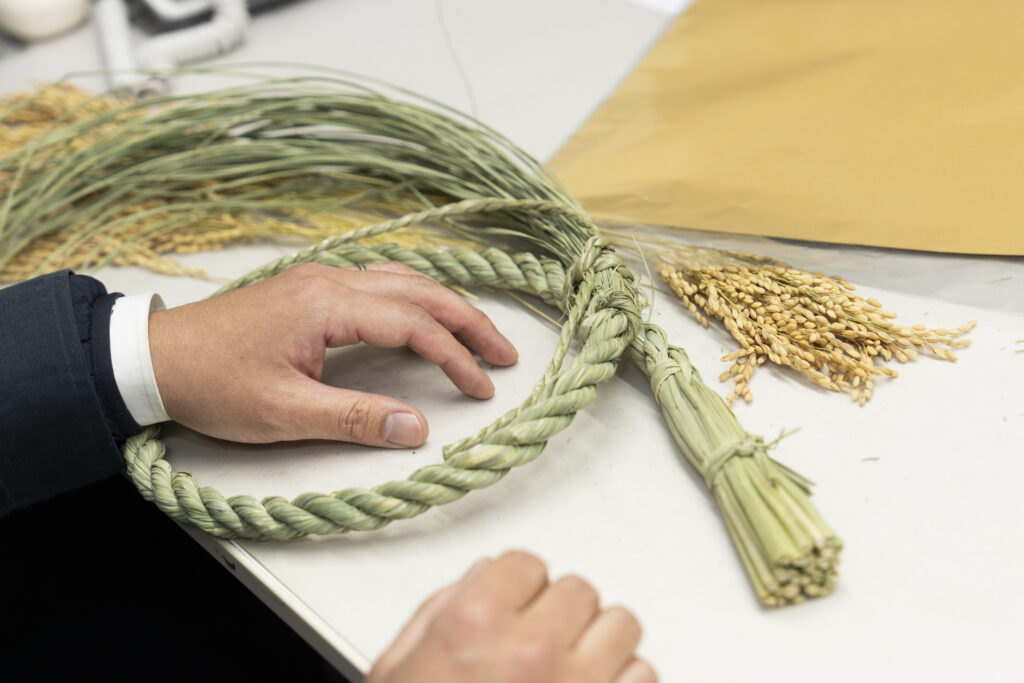
The kit includes a tightly wound rope and decorative rice stalks, plus cord for arranging your own embellishments.
“You can add seasonal flowers, combine it with your own ornaments—however you like,” said Yanagi. “We want people to have fun decorating it in their own way.”
This time, the concept was a stylish shimenawa that feels more like a piece of art—something you can casually hang at home. “Not everyone has a household shrine these days, and that’s totally fine. I want people to enjoy shimenawa as a creative decoration,” said Kubishiro. “That’s why I’m thinking of calling the product ‘Jizai,’ meaning ‘freeform,’ to reflect the idea.”
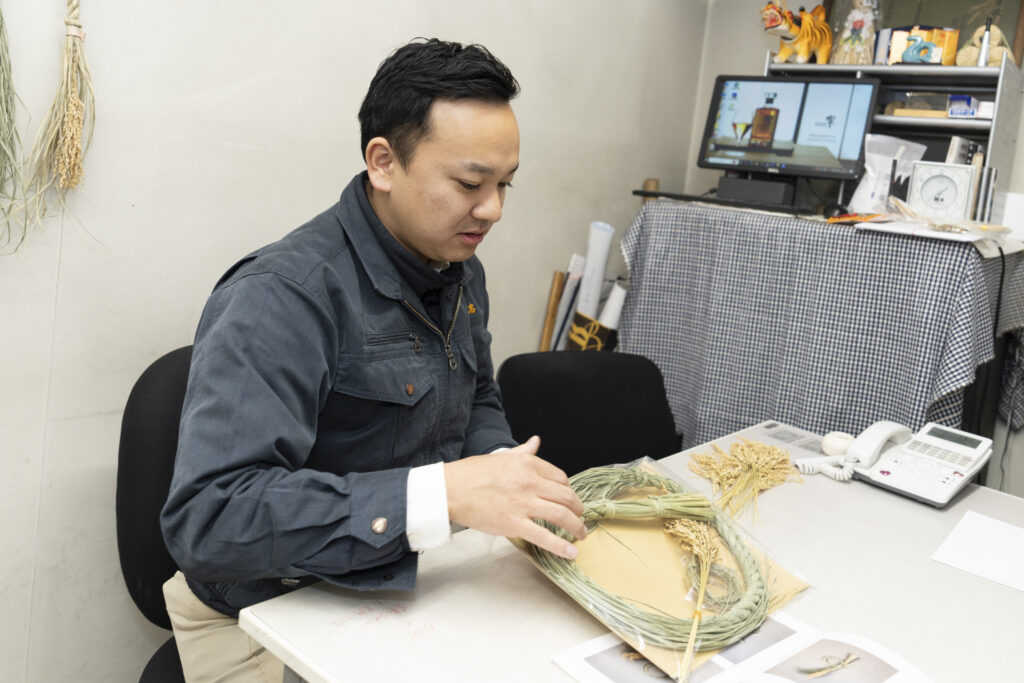
Kubishiro packing up a sample kit with all the contents.。
With the kit content now finalized, it was time to focus on the details—packaging, instructions, and overall presentation. Nakagawa laid out several color options for the backing card, and they chose a rich chestnut brown. As they nailed down the instructional text, cautionary notes, and logo stickers, a clear image of how the product would look on the shelves began to emerge.
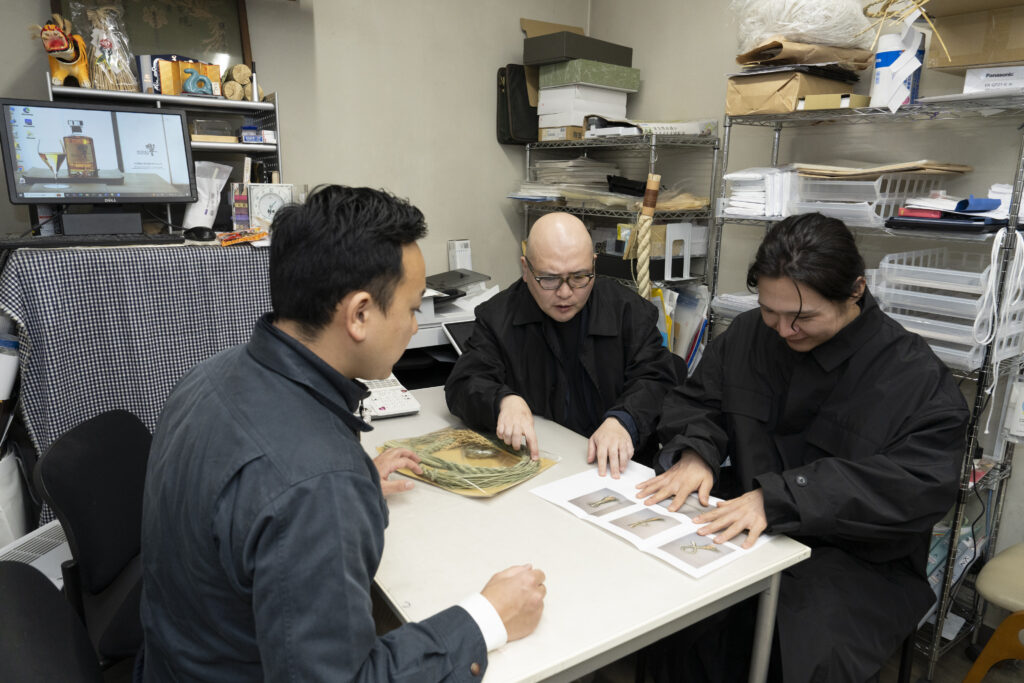
Nakagawa (right) shares a sample photo of a completed shimenawa decoration. They experimented with all kinds of arrangements back at the office.
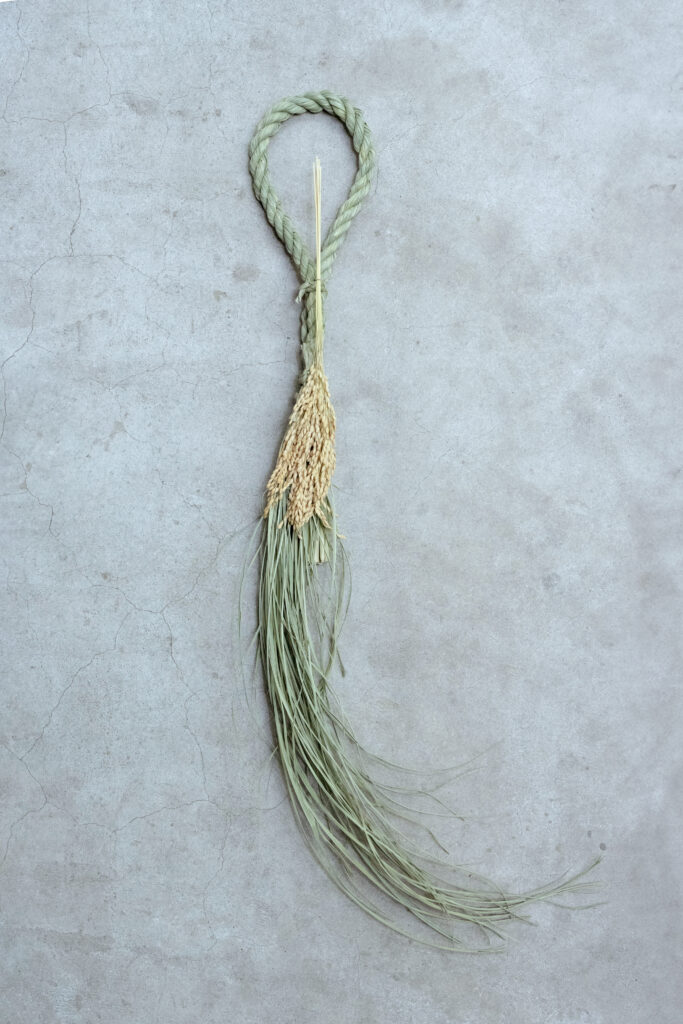
One example of how to style it: rice stalks tied into a loop with flowing rope ends. Wetting and shaping the ends before drying can help create dynamic curves and angles.
With just a small change in how it’s displayed, the Jizai shimenawa takes on a modern look that fits in anywhere. While shimenawa are traditionally associated with New Year decorations and Shinto rituals, this kit offers a casual way to enjoy shimenawa culture—no formal rules required!
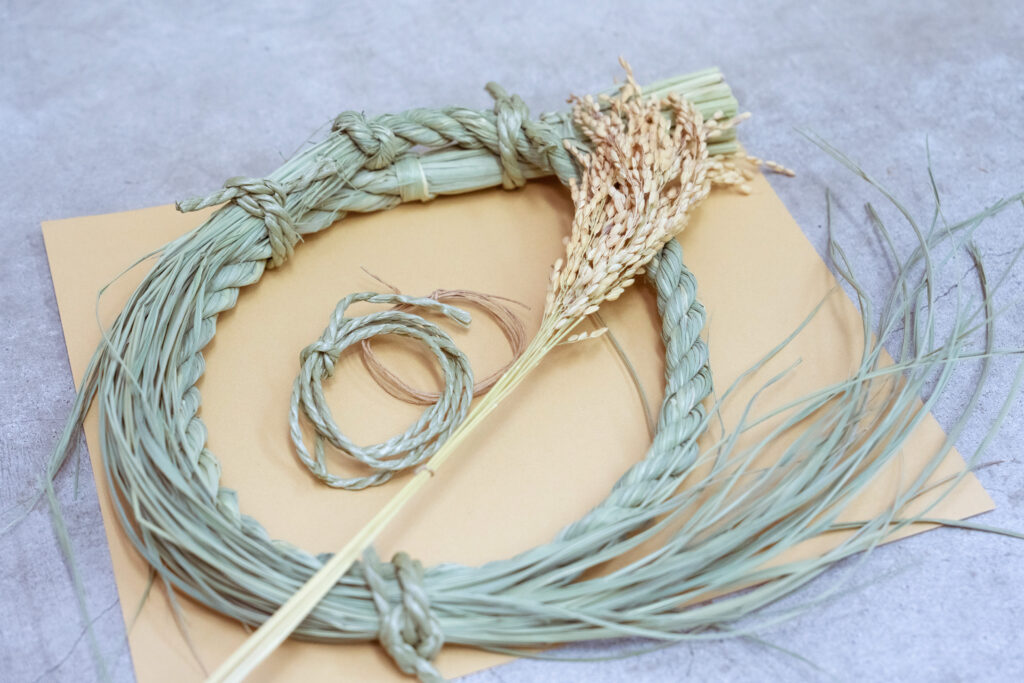
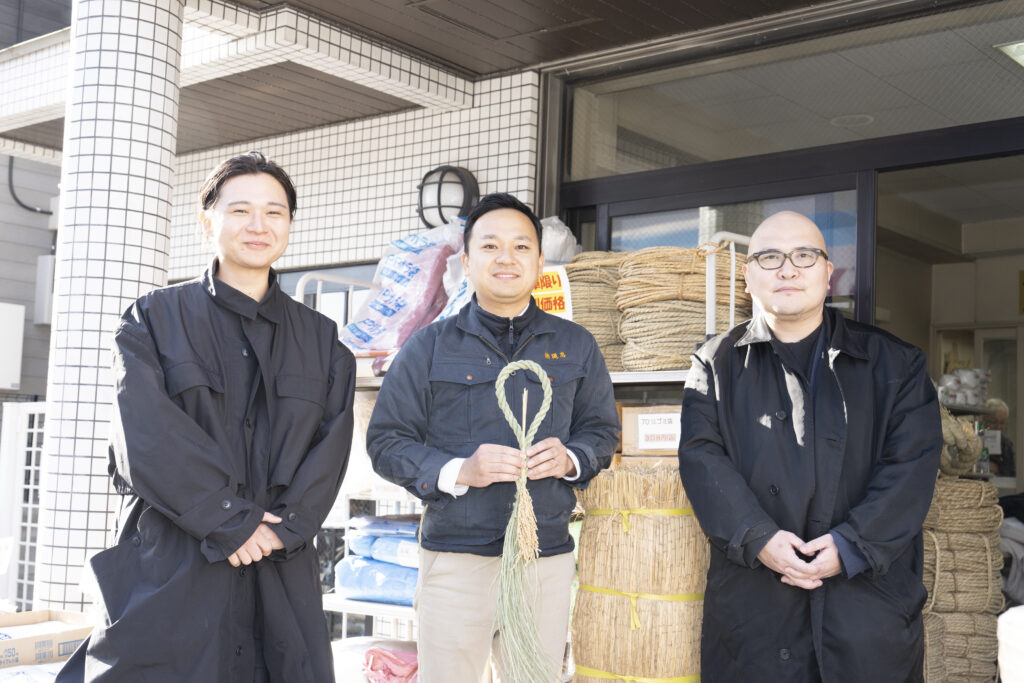
A commemorative photo at the shop with the finished shimenawa decoration.
The final stop of the day was Shinohara Furin.
During the last visit, the team landed on a clear visual direction for the furin wind chime: a vivid vermilion that recalls its original use as a protective charm, paired with imagery of shidareyanagi weeping willows and gas lamps, symbols of Ginza’s landscape. This time, the goal was to finalize the design and discuss the details of the paper strip, or tanzaku, and packaging.
“Long ago, Ginza used to be coastal,” Yanagi explained. “Because of the sea breeze, it was hard for trees to grow—but for some reason, the willows always thrived.”
The product’s name has now been officially set: Ginza no Yanagi to Gasuto—that is, Willows and Gas Lamps of Ginza!
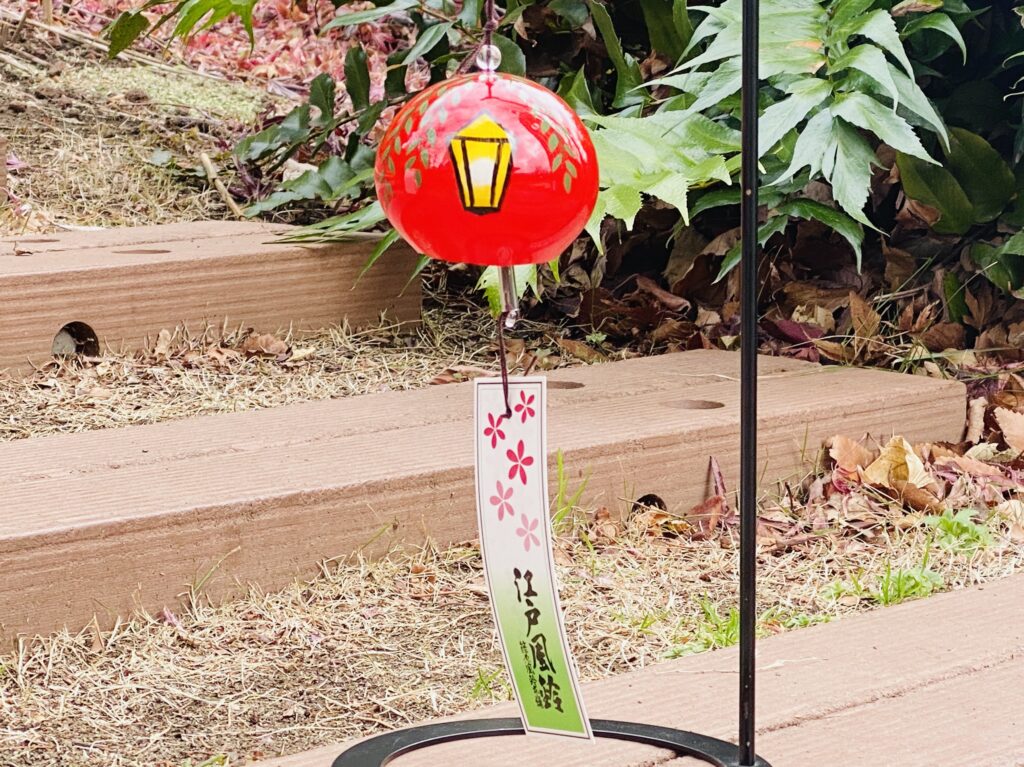
The finished design for Ginza no Yanagi to Gasuto
They’re also creating an original tanzaku paper strip to hang from the furin. Nakagawa brought along a selection of art papers, and they tested different colors and sizes to see what worked best with the sample bell.
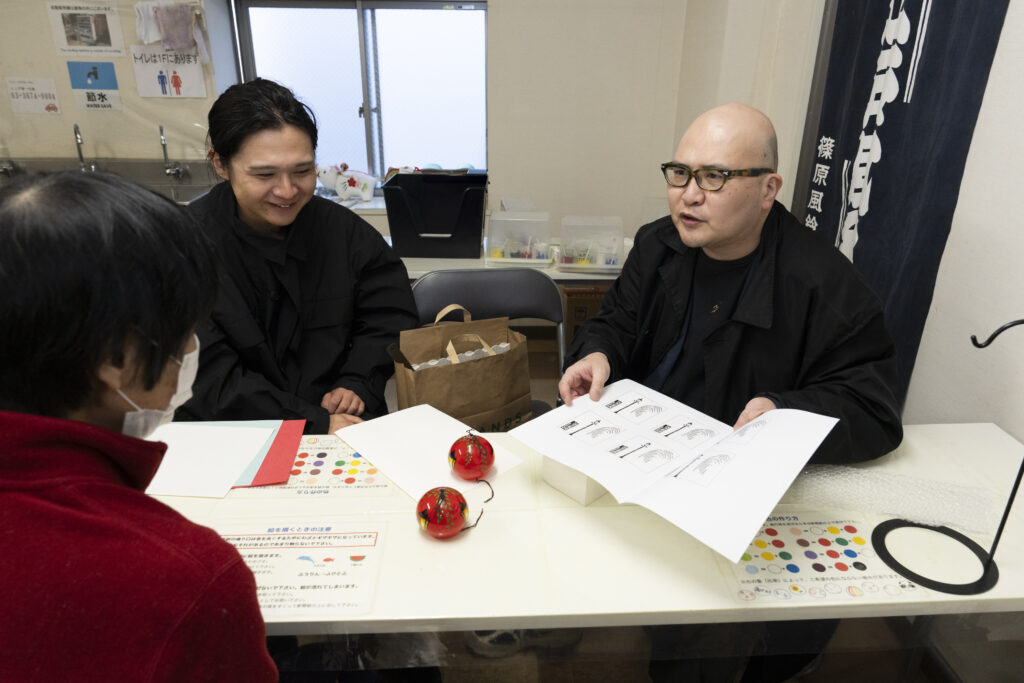
Yanagi brought draft illustrations for the packaging design.
“There’s no fixed size for tanzaku,” Shinohara explained. “The size and weight can really affect how easily the bell rings. Depending on the wind in your space and how much sound you want, you can adjust the paper accordingly.”
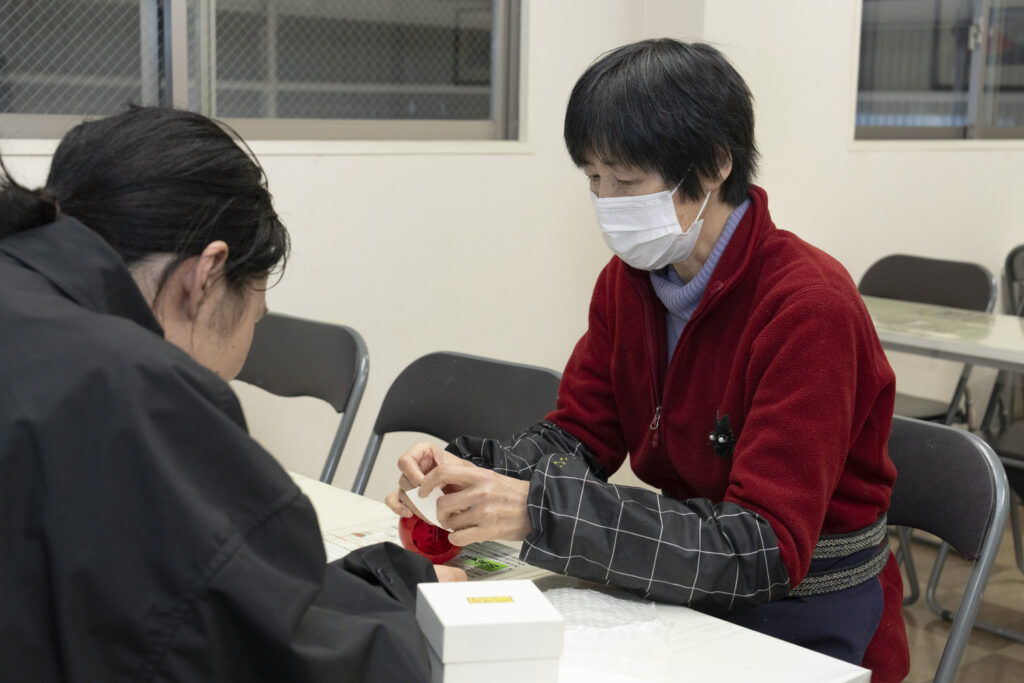
Nakagawa (left) and Shinohara (right) choosing the best tanzaku paper and size to suit the bell.
Today, wind chimes are usually hung from places with good airflow—like curtain rails—but Shinohara Furin also offers custom stands designed specifically for them.
The stand is a bamboo box, crafted to order by a traditional workshop in Shizuoka. When you place the bell inside, the red silhouette of the wind chime appears through the latticework, changing depending on the angle you view it from.
“If we display the stand in-store too, I think it’ll help people picture how it would look in their homes,” Nakagawa noted.
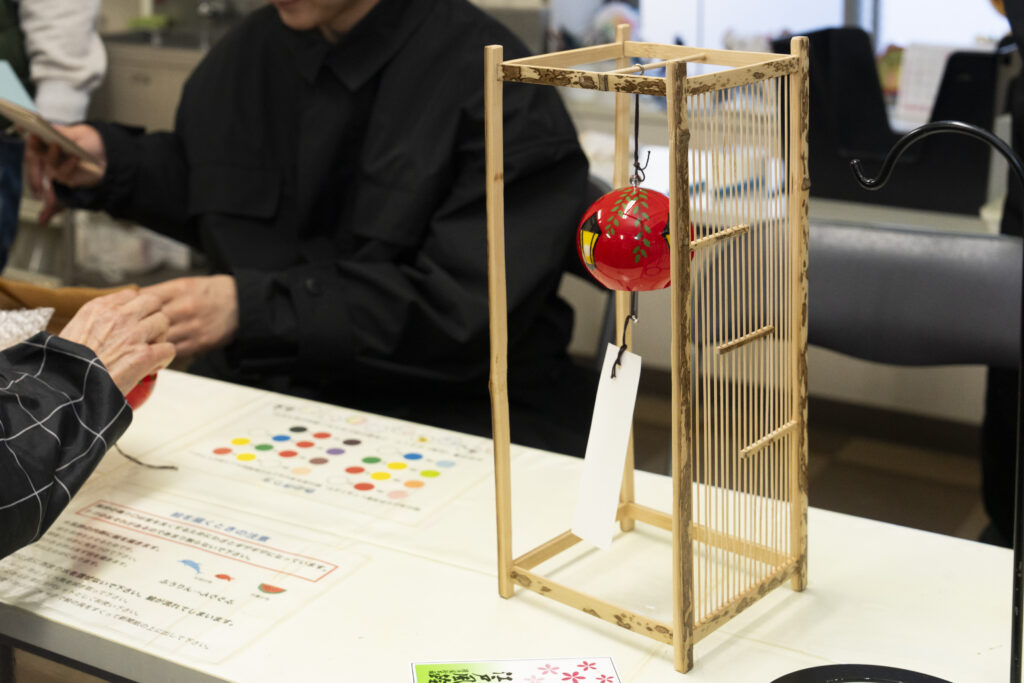
Shinohara Furin’s original bamboo stand. The wind chime looks just as beautiful framed by the lattice as seen through it.
With the product meeting wrapped up, the team was invited once again to watch the glass-blowing process behind the wind chime’s creation. Each bell is carefully shaped by a skilled artisan, and no two have the same tone, making each and every piece truly individual.
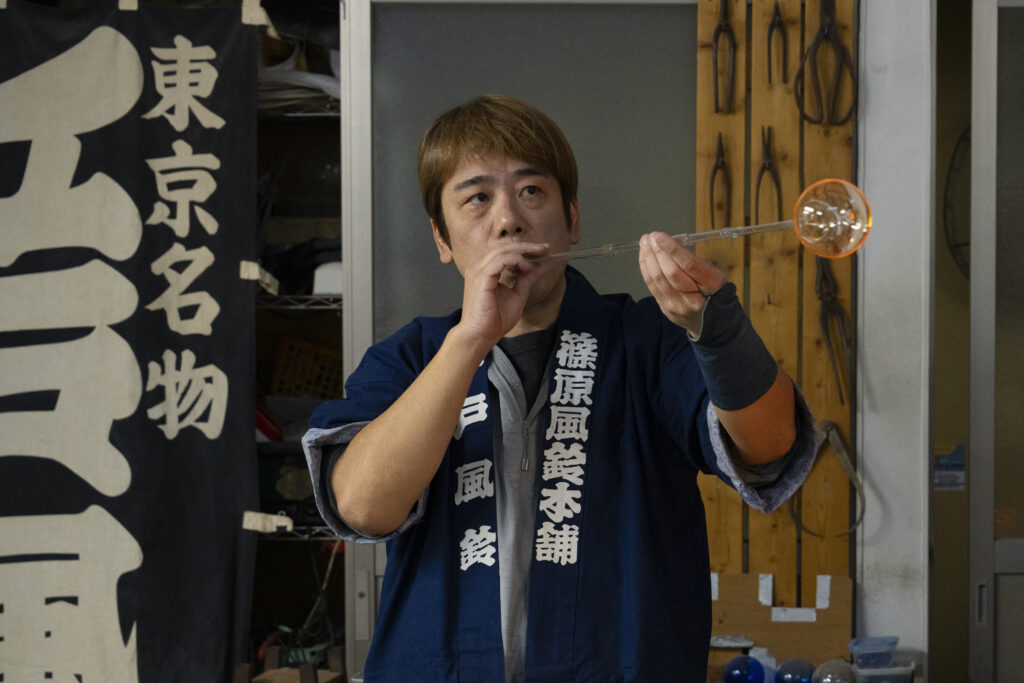
The method used to blow molten glass into shape. The glass is heated to over 1300°C.
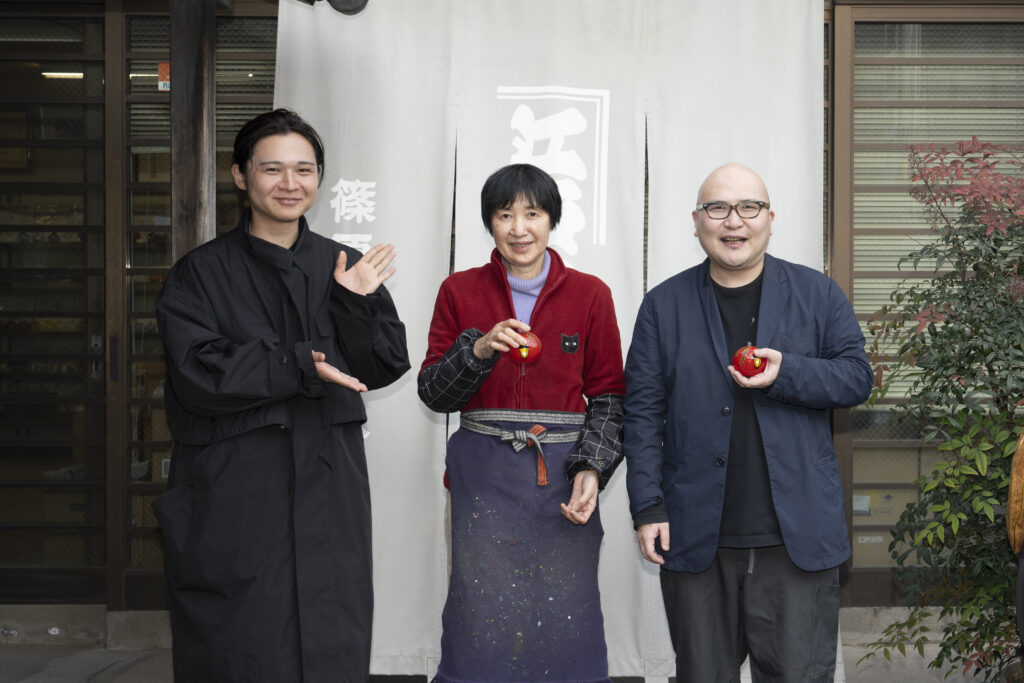
Final refinements will make the design even more polished.
Development of these collaborative products is now in its final stretch, and the excitement is building to see how everything will come together on the shelves.
Next time, the finished products make their debut. Look out for them at the gift show starting February 12!
Text: Kato Yuri
Photo: Ito Tomomi
